- CME 480 Design Project II
- Winona State University
Product Fabrication
CAD Drawings
Finalizing a design design before beginning fabrication.
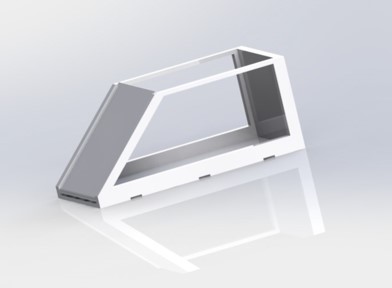
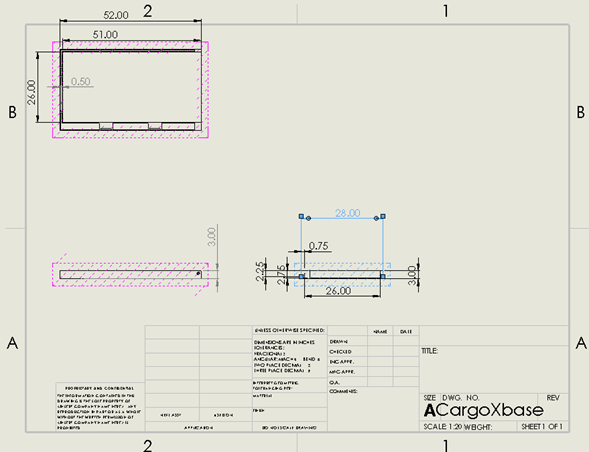
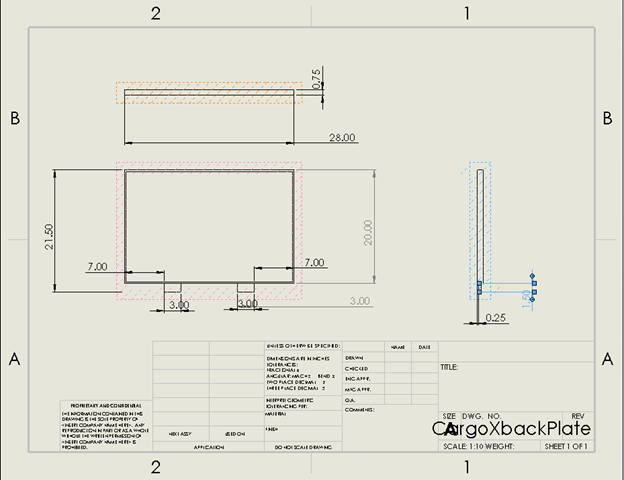
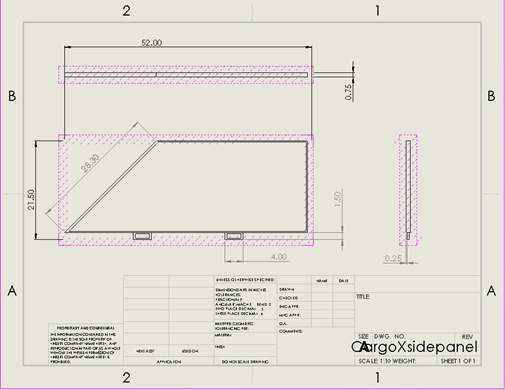
Fabrication Process
To begin product fabrication we started by hand laying up several carbon fiber panels using a honeycomb composite core and carbon fiber fabric plies. We then did final trims of the panels to match the dimensions of our initial CAD drawings.
Once we had all the panels made, we cut our “lip” panels in half which were then separated by 3/16″ wood spacers which created the holes to which the pegs on our side panels would connect. The lips were bonded to the bottom panel using adhesive. The side panels were fabricated the same way as the other panels but a foam core was used for light weighting purposes. Channels were cut in the bottom of the side panels and pegs were bonded in the channels. Also, holes were cut in the side panels for light weighting purposes and ease of usage.
For the front panel the fabrication was the same as the lip panels. Carbon fiber was laid up over a piece of 2×4 in the front which was used as a base for the piano hinge which holds the front panel and allows it to swing in/out for loading.
A PVC bag was attached to the outside of the box for waterproofing and extra structural integrity.
Some qualification testing was also done. Flexural and impact testing was conducted on a test panel which was fabricated the same way as the lip panels. Dimensional and visual inspections were also conducted.
-
CAD drawings for initial design and dimensions
-
Carbon fiber panels fabricated
-
Carbon fiber panels trimmed and necessary cuts made
-
Carbon fiber panels assembled and bonded using adhesive
-
Qualification testing conducted (Dimensional, Mechanical and Visual inspections)
-
PVC Bag assembled to outside of frame
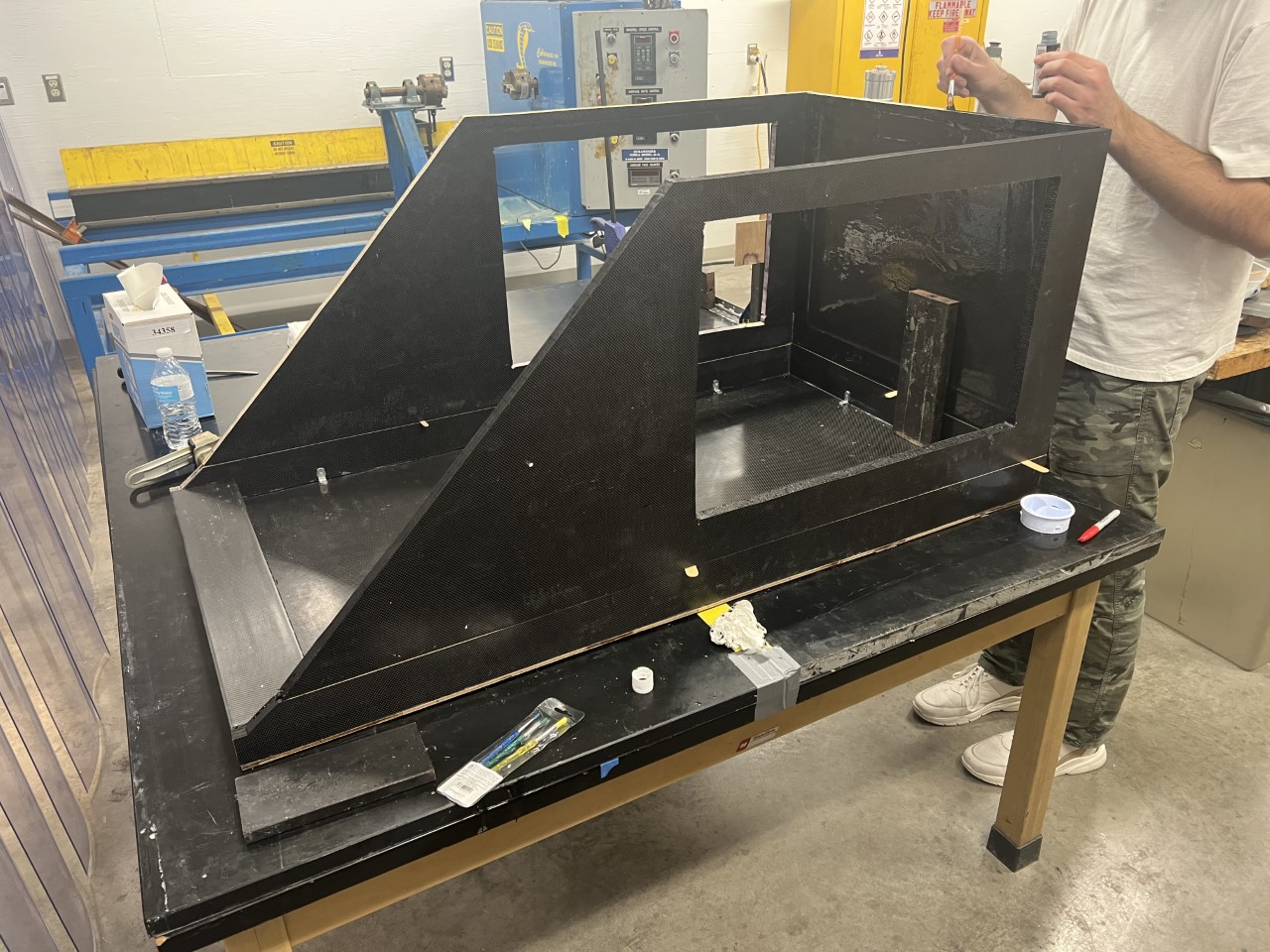
Detachable side and back panels for easy assemble and storage
Carbon fiber for improved strength and weather resistant capabilities
Large storage capacity with great affordability without compromising structural integrity
Aerodynamic design for improved fuel efficiency and designed for cars with and without roof racks



